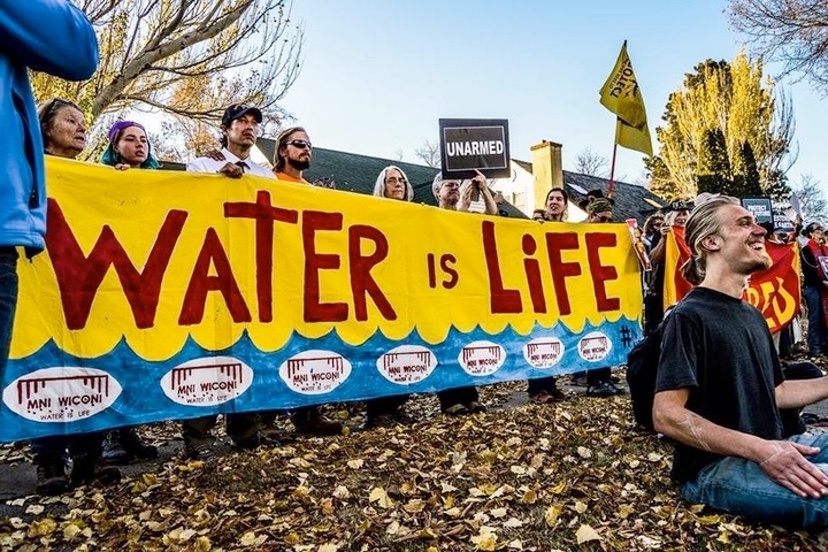For some people, water is life, something to which we all have a right.
To other people, water is financial profit, and perhaps political power.
Water can even be a reason to file a lawsuit.
We’ve run a couple of op-ed pieces here in the Daily Post, addressing journalist concerns about “judicial review”.
Columnist Rachel Suh touched on the topic earlier this month.
Columnist Gary Beatty discussed it last year.
I don’t have the legal background enjoyed by either of these two columnists, but I’ve written about various legal issues over the past 20 years as Daily Post editor, and many of those articles have concerned water.
The term “judicial review” is often applied when discussing court cases, wherein the plaintiff believes a law — passed by Congress or by a state or local government — violates the U.S. Constitution or the state constitution.
This is a powerful tool when wielded by the courts, because it can take on the character of “rewriting” a law, to make it mean what the judges think it means, rather than what ordinary people (and their attorneys, and maybe even Congress) thought it meant.
It’s easy for a person to complain that the court made the wrong interpretation, when that person has a different interpretation. We all love to complain. We can even complain that the Judicial Branch has no right to tell Congress what a law passed by the Congress actually means. But as Mr. Beatty wrote in a previous op-ed:
Those questioning the constitutional validity of empowering the executive branch regulatory agencies to interpret their own rules, instead of the courts, argue that the ‘CD’ violates the concept of ‘separation of powers’ – and the corollary doctrine declared by the Supreme Court in ‘Marbury v Madison’, in 1803, that “…It is emphatically the province and duty of the judicial department to say what the law is…”
It took 40 years for the Court to be comprised of a majority of Justices who believed the original constitutional separation of powers concept — and that the doctrine declared in ‘Marbury’ — still apply. After all, the Justices who decided ‘Marbury’ had first-hand knowledge of what the Constitution meant, because they were alive when it was written.
Most of the work done by our courts, however, has very little to do with interpreting constitutions. (As I learned from Mr. Beatty.)
One job handled by Colorado courts, for example, is to review applications for water rights.
More about that in a second.
Another job is reviewing contracts in dispute. Occasionally, contracts are written so that certain language within the contract is ambiguous, such that the parties need a judge to give a fair and unbiased opinion of what, exactly, the language means. The contract can be a written document, but it can also be a verbal agreement… or a law passed by legislators, which we might view as a legal contract between the legislators and the voters who elected them.
In a sense, the U.S. Constitution is a legal contract between the 50 States and the Federal Government. But we tend to view it more like a contract between U.S. citizens and the Federal Government.
If an agreement was signed many years ago by — for example — two government boards, and the membership of those boards is now a new set of people who were not involved in the original contract signing… a dispute might well arise.
This very thing has indeed happened to a contract signed in 2015 by Pagosa Area Water and Sanitation District and the San Juan Water Conservancy District… and revised in 2016. The two boards cannot agree about what certain language in the contract means.
Thus, the trip to court. Perhaps a very expensive trip to court? Paid by the taxpayers?
Reasonable people can disagree, as we all know. Even unreasonable people can disagree.
So, back to the question of water rights. One of my favorite subjects.
Much of the water that serves agriculture, industry, communities, and the environment in the American Southwest begins its journey — typically heading south or west — in Colorado’s Rocky Mountains. Journalists tend to make the claim that the largest river in the Southwest — the Colorado River — serves 40 million people. I’m not sure where that number comes from, but I see it used regularly in articles about the Colorado River Basin.
Each of the seven states that divert water from the Colorado River have their own rules about how water is distributed to agriculture, industry, communities, and the environment. (I realize it’s a bit weird to say that the Colorado River “serves the environment” since the Colorado River is part of the environment. But humor me, for the time being.)
The Colorado constitution declares that the state’s surface and groundwater is a public resource for beneficial use by public agencies, private persons, and entities. But even prior to statehood, the Territory of Colorado had developed laws that allocated water rights based on “whoever was first in line.” If Farmer Brown obtained a water rights decree for 60 CFS (cubic feet per second) in 1883, and Farmer McDonald obtained a water rights decree — in the same river — for 60 CFS the following year, in 1884… and the river happens to be flowing at 60 CFS, Farmer Brown has the right to his entire 60 CFS before Farmer McDonald can divert even one drop.
It’s an interesting system.
To make it more interesting, the Colorado legislature determined that Farmer Brown could later sell his farm — along with the 1883 water right — to billionaire Musk, and billionaire Musk would then be allowed to divert his full 60 CFS before Farmer McDonald can draw any water under his 1884 water right.
So, in a sense, a public resource became a private asset, so long as it was used in the same location for the same purpose.
To make things even more interesting, the Colorado legislature began to allow billionaire Musk to move a purchased water right to a different location and use it for a different purpose, under certain circumstances. Agricultural water could become industrial water.
Or municipal water.
If you had enough money, and a good lawyer.

